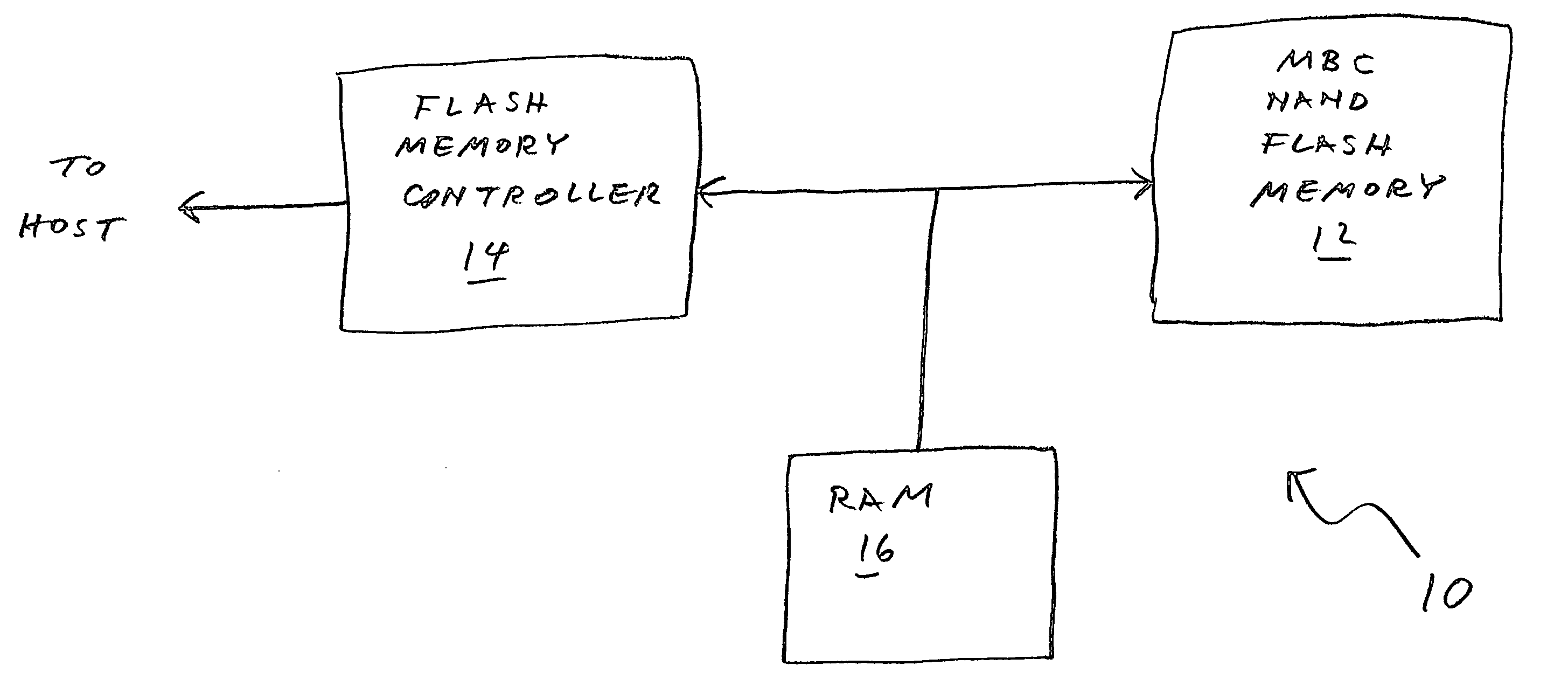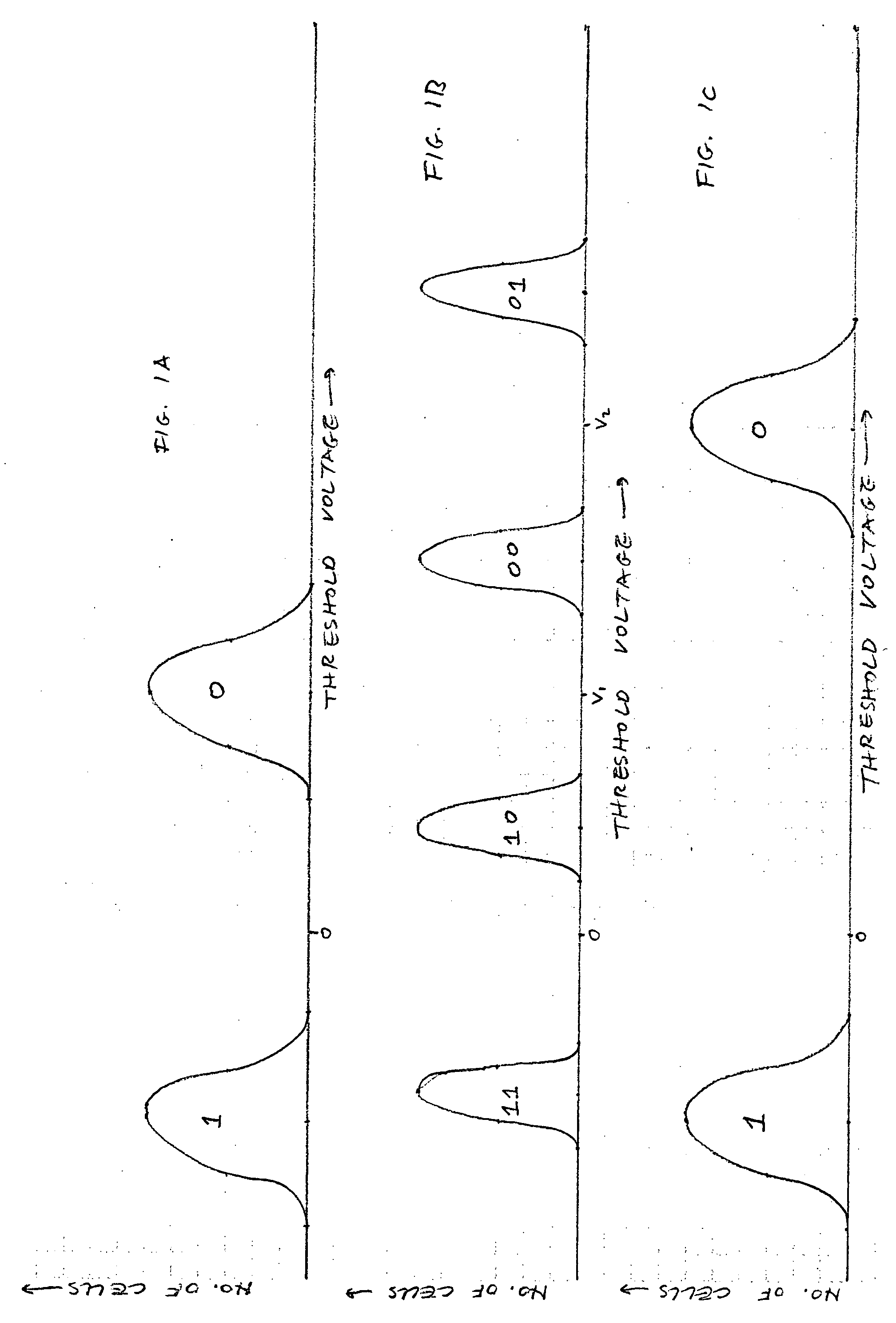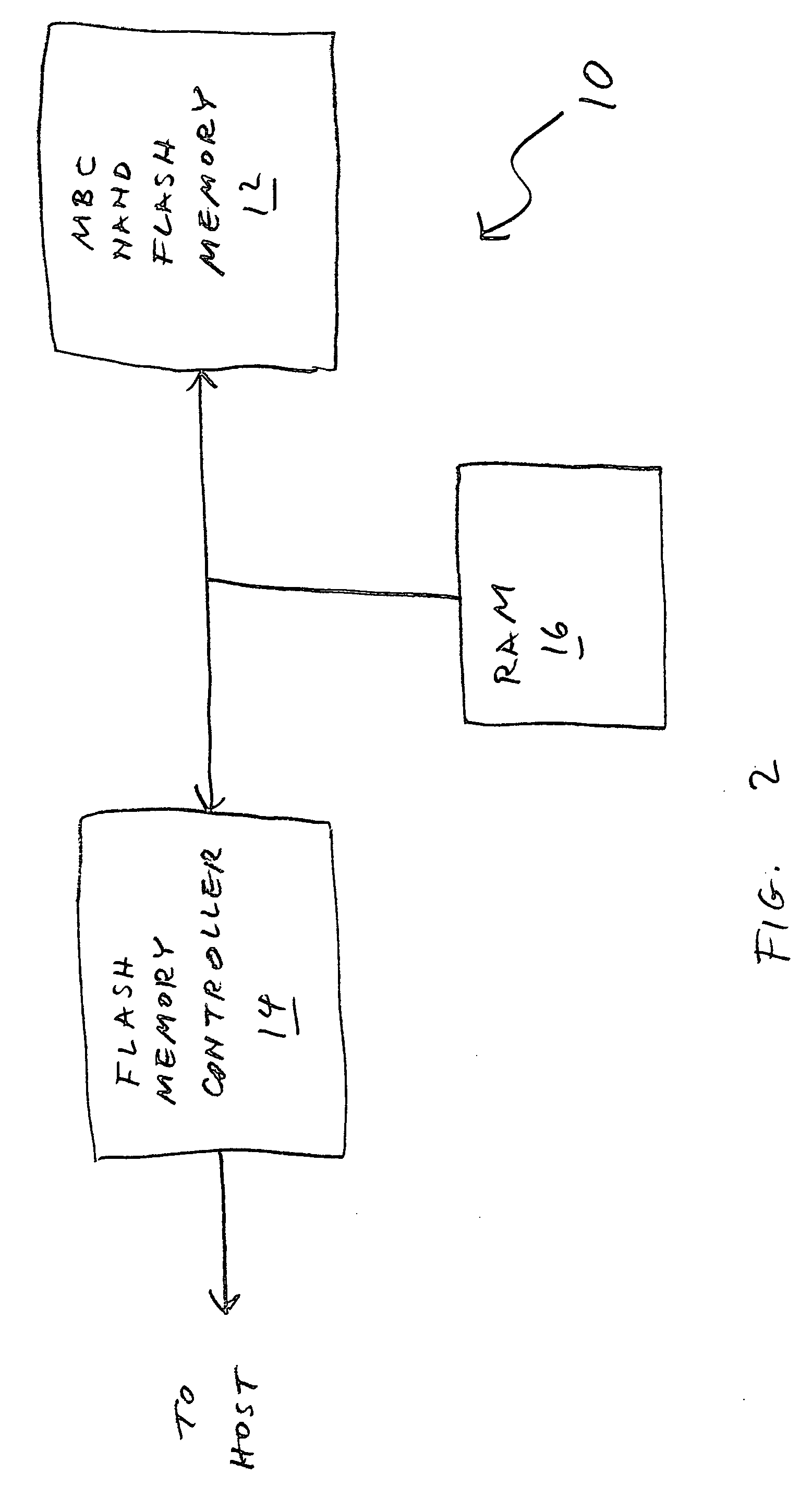Method of managing a multi-bit-cell flash memory
a multi-bit, flash memory technology, applied in the field of flash memory, can solve the problems of lower reliability of mbc than sbc, lower quality specification of mbc cells in terms of data retention time, and lower performan
- Summary
- Abstract
- Description
- Claims
- Application Information
AI Technical Summary
Benefits of technology
Problems solved by technology
Method used
Image
Examples
Embodiment Construction
[0039] The present invention is of a method of managing the programming of the cells of a flash memory with different numbers of bits. Specifically, the present invention can be used, during normal power-up or upon recovery from a power loss, to determine the bit number mode that was used to program the flash cells of each block of the memory.
[0040] The principles and operation of a flash memory according to the present invention may be better understood with reference to the drawings and the accompanying description.
[0041] The preferred embodiment of the present invention assumes that the reference voltage used to distinguish the unprogrammed state of a cell from any of its programmed states is the same for all values of N. This condition is in fact satisfied by most flash memories that support N>1, because commonly the states of a N=1 flash cell are defined so that the “1” state has a negative threshold voltage and the “0” state has a positive threshold voltage; and the states o...
PUM
 Login to View More
Login to View More Abstract
Description
Claims
Application Information
 Login to View More
Login to View More - R&D
- Intellectual Property
- Life Sciences
- Materials
- Tech Scout
- Unparalleled Data Quality
- Higher Quality Content
- 60% Fewer Hallucinations
Browse by: Latest US Patents, China's latest patents, Technical Efficacy Thesaurus, Application Domain, Technology Topic, Popular Technical Reports.
© 2025 PatSnap. All rights reserved.Legal|Privacy policy|Modern Slavery Act Transparency Statement|Sitemap|About US| Contact US: help@patsnap.com



